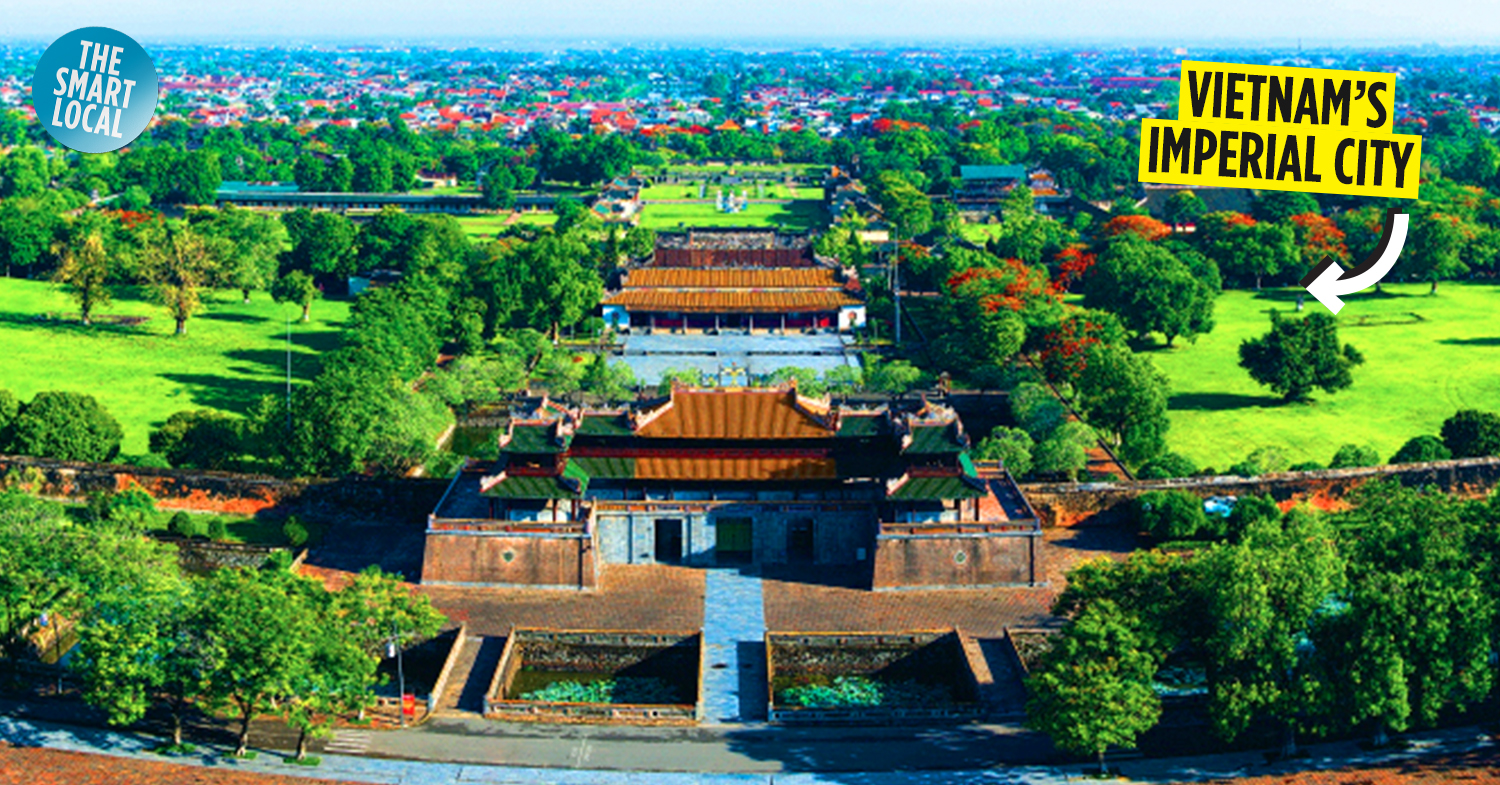Things to do in Huế, Vietnam
Huế, the former imperial city of Vietnam, is packed with world-heritage sites, imperial palaces, mausoleums, and history places.
From the iconic landmarks such as the Forbidden City to the city’s incredible food scene and fascinating natural beauty, you could spend months exploring Huế.
Here’s our ultimate Huế travel guide to help you make the most of your stay.
Getting to Huế
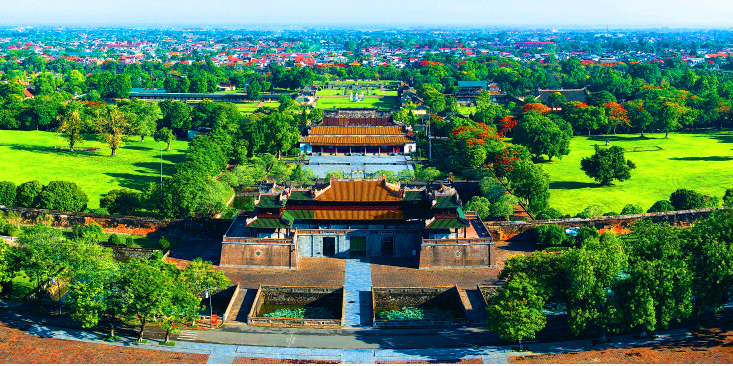
Image adapted from: Đầu Bếp
How much does it cost to go to Huế from Saigon or Hanoi?
By air

It takes about 1 hour and 25 minutes to fly from Ho Chi Minh City to Huế’s Phú Bài airport, average air fares going at VND1,000,000 (~USD43.94) for a round trip.
Meanwhile, a flight from Hanoi to Huế takes about 1 hour and 10 minutes, costing around VND1,300,000 (~USD57.12) for a round-trip ticket.
By train

Image credit: @kidman4uk
From Saigon
Saigon is about 1,045 km away from Huế. It takes about 19 to 20 hours to travel from Saigon to Huế by train, and average air fares range from VND500,000 to VND 800,000 (~USD21.98-USD35.16) per person for a one-way ride.
From Hanoi
Hanoi is about 715 km away from Huế. It takes about 13 to 14 hours to travel from Hanoi to Huế by train. For a one-way ride, the average air fares range from VND700,000 to VND950,000 (~USD30.76-USD41.75) per person.
You can find out how to book train tickets here.
Travelling from Phú Bài airport to Huế city center

Image adapted from: @minhnguyen291
The distance from the airport to the Huế city centre is about 15 km.
If you’re travelling by yourself, take the airport bus. Tickets cost VND50,000 (~USD2.20) per person. The bus will send all passengers to one destination at the city centre near Vincom Plaza, then it’s up to passengers to decide how they will move to their next location.
If you are travelling in a group of 4-10, you can get a cab at the airport for more convenience. The cab fare ranges between VND150,000-VND200,000 (~USD6.59-USD8.79).
Getting around Huế
GrabBike

Image credit: @jenjensostia
GrabBikes are available in Huế, so they’re quite convenient if you’re travelling short distances within the city.
Download the Grab app here.
Cyclos

Image credit: @jj_wanderlust
Cyclos are also considered a unique and vintage trait of Huế, so there are as many of them here as there are GrabBikes in Saigon. An average 1-hour cyclo ride costs about VND80,000-VND100,000 (~USD3.52-USD4.39), but make sure you have a destination in mind and negotiate the fare upfront before hopping on.
Motorbike

Image credit: @darcyparrotta
You can rent a motorbike in Huế at about VND100,000-VND400,000 (~USD4.10-USD17.58) per day, depending on the type of motorbike you want to rent.
Find your bike at Hidibike.com or Huế Motorbike Rental.
Bicycles

Image credit: @summersummergo
Huế is much more slow-paced compared to Saigon or Hanoi, so it’s an ideal place to ride a bike around the city, past the Huong river and ancient properties.
You can rent a bicycle at about VND50,000-VND200,000 (~USD2.20-USD8.79) with Huế Smile Travel. Alternatively, many hotels or guest houses in Huế provide bicycle-rental services, so you can ask for advice from the staff at the place where you’re staying.
Or you can go to Hùng Vương and Phạm Ngũ Lão streets, home to a large number of bicycle rental shops in town.
– Ancient landmarks in Huế –
1. An Hiên Garden House (Nhà vườn An Hiên) – former residence of a royal family
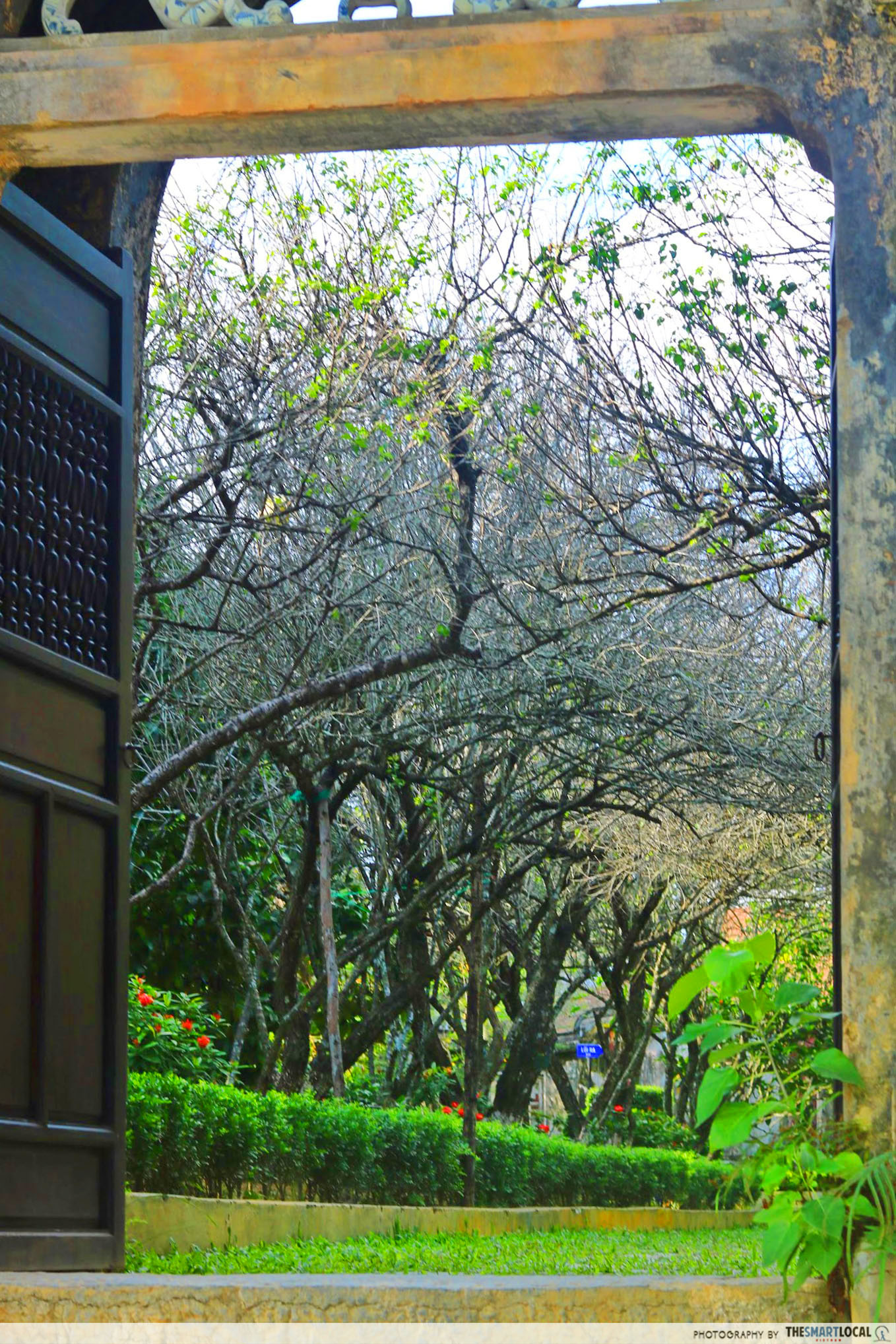
Those with a keen interest in imperial history and curious to know how the royal family members lived in the previous centuries, you shouldn’t miss out on this historical gem.
An Hiên Garden House used to belong to the 18th princess of the Emperor Dục Đức of the Nguyễn dynasty, and it’s already 120 years old.
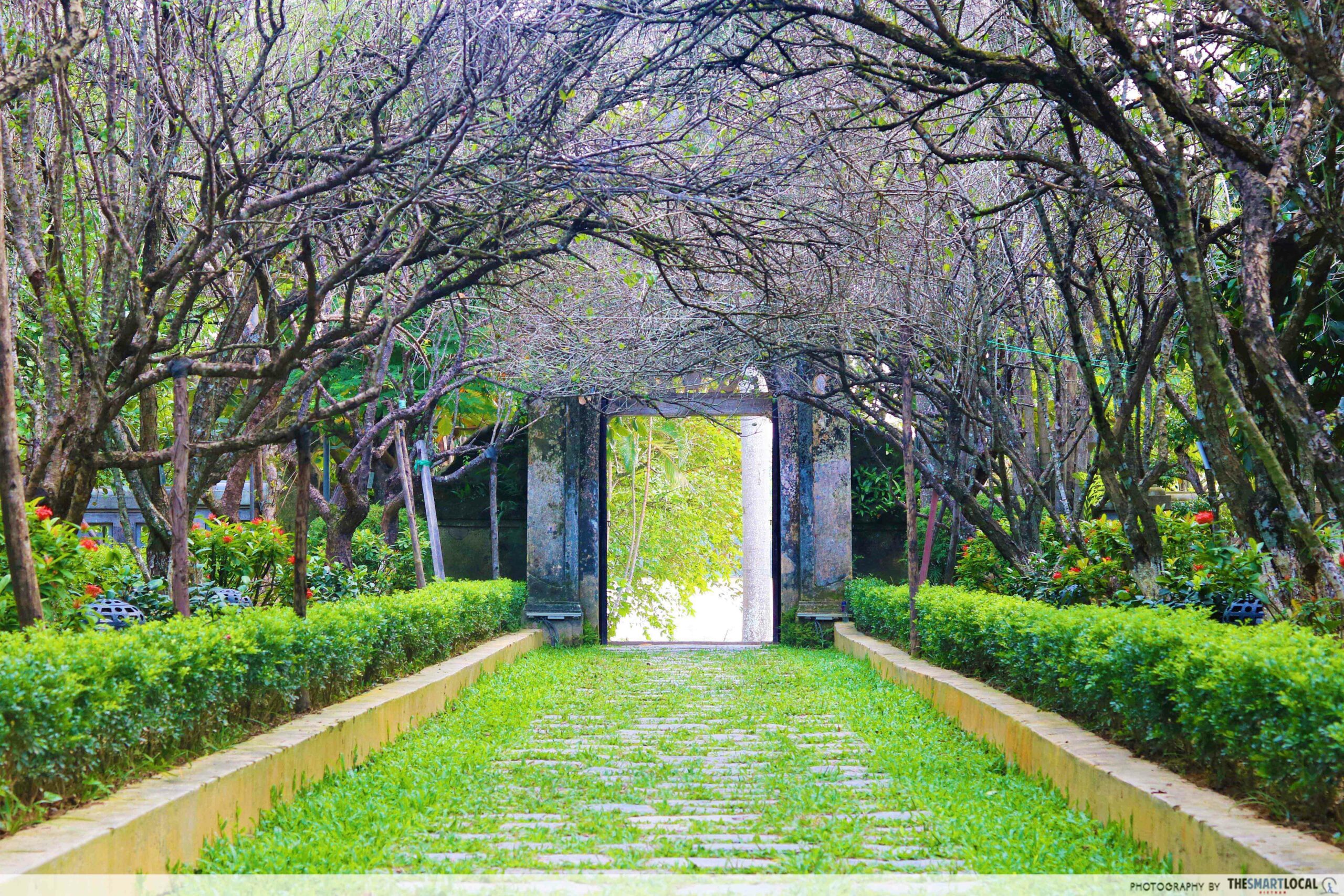
Its architecture is heavily influenced by feng shui, so you’ll see how it’s perfectly balanced with nature. The house faces south, which is considered an imperial geographical direction that can bring power and fame.

Lotus pond in front of the main hamlet
A line of apricot trees, a stone screen, and a lotus pond in the yard function as a defense line to deter evil forces from entering the house and also to illustrate the feng shui principle that the accumulation of water brings blessings.
The house and garden’s total size is 4,608 sqm, about the size of four football fields.

The guest reception area and the resting area are in the same place
Huế’s vernacular homes, such as this one, follow a set pattern: the main hamlet has a shrine for deities and ancestors in the center, with two sides being used as the bedrooms for family elders as well as the living room. These areas, though within one space, are not separated by walls, but by pillars.
The other two hamlets are used for the younger members of the family, as well as containing the servants’ section, and the kitchen.
The house still boasts vernacular elements typical of the Nguyễn dynasty era, such as a tiled sloped roof adorned with unicorns, interlocking wooden brackets, and low ceilings.
Admission fee: VND 30,000 (~USD1.32) per person
Address: 58 Nguyễn Phúc Nguyên, Hương Long, Huế
Opening hours: 7AM-6PM, Daily
Find out how to get there here.
2. The mausoleum of Emperor Minh Mạng – designed by the emperor himself

Tẩm Điện (the shrine) of Emperor Minh Mạng’s mausoleum
If you are interested in Vietnam’s traditional architecture, you’ll get plenty of lessons on imperial designs and fengshui at Emperor Minh Mạng’s mausoleum.
Located on the west side of the Hương River, the site was built out of the belief that Emperors were the sons of Heaven and were like the sun to a nation. After all, as the sun sets in the west, the Emperor also rests in the west.
Minh Mạng was considered one of the greatest emperors of Vietnam, learned in Eastern philosophy, and highly intellectual. Under his rule, Vietnam was the most prosperous and strong nation in the region.
The mausoleum was built under the rule of Emperor Minh Mạng (1820-1840), but completed under the reign of Emperor Thiệu Trị (1841-1847), his successor. The entire site includes: Đại Hồng Môn (the main gate), Bi Đình (the yard where the stone mandarins and horses stand), Tẩm Điện (the shrine), Lầu Minh Lâu, and Bửu Thành (the tomb).
 Lầu Minh Lâu, built in 1841
Lầu Minh Lâu, built in 1841
The 15-hectare mausoleum is located on Cẩm Khê Mountain, and flanked by Kim Phụng Mountain. From a bird’s eye view, the mausoleum looks like a person lying down and resting his head on Kim Phụng Mountain, while his limbs extend towards a river’s confluence.
The Thông Minh Chính Trực bridge, meaning Intelligence and Righteousness, crosses over moon-shaped Tân Nguyệt lake and leads to the round-shaped Bửu Thành, the resting place of the Emperor. The lake embraces the tomb, demonstrating the Emperor’s desire to embrace the Earth and rule the universe.
This place is about 18 km away from Huế’s city centre, so you can take a cab or go there by GrabBike. If you already have a motorbike, ride towards the direction of Quốc Lộ 49, past Tuần bridge, and you’ll get there.
You’ll need about 1 hour to explore the place. Fun fact: the mausoleum appears in the movie Indochine (1992) – read our review of it here.
Admission fee: VND100,000 (~USD4.40) per person
Address: QL49, Hương Thọ, Hương Trà, Huế
Opening hours: 7AM-5PM, Daily
Find out how to get there here.
3. The mausoleum of Emperor Khải Định – a breathtaking blend between Asian and European architectural elements
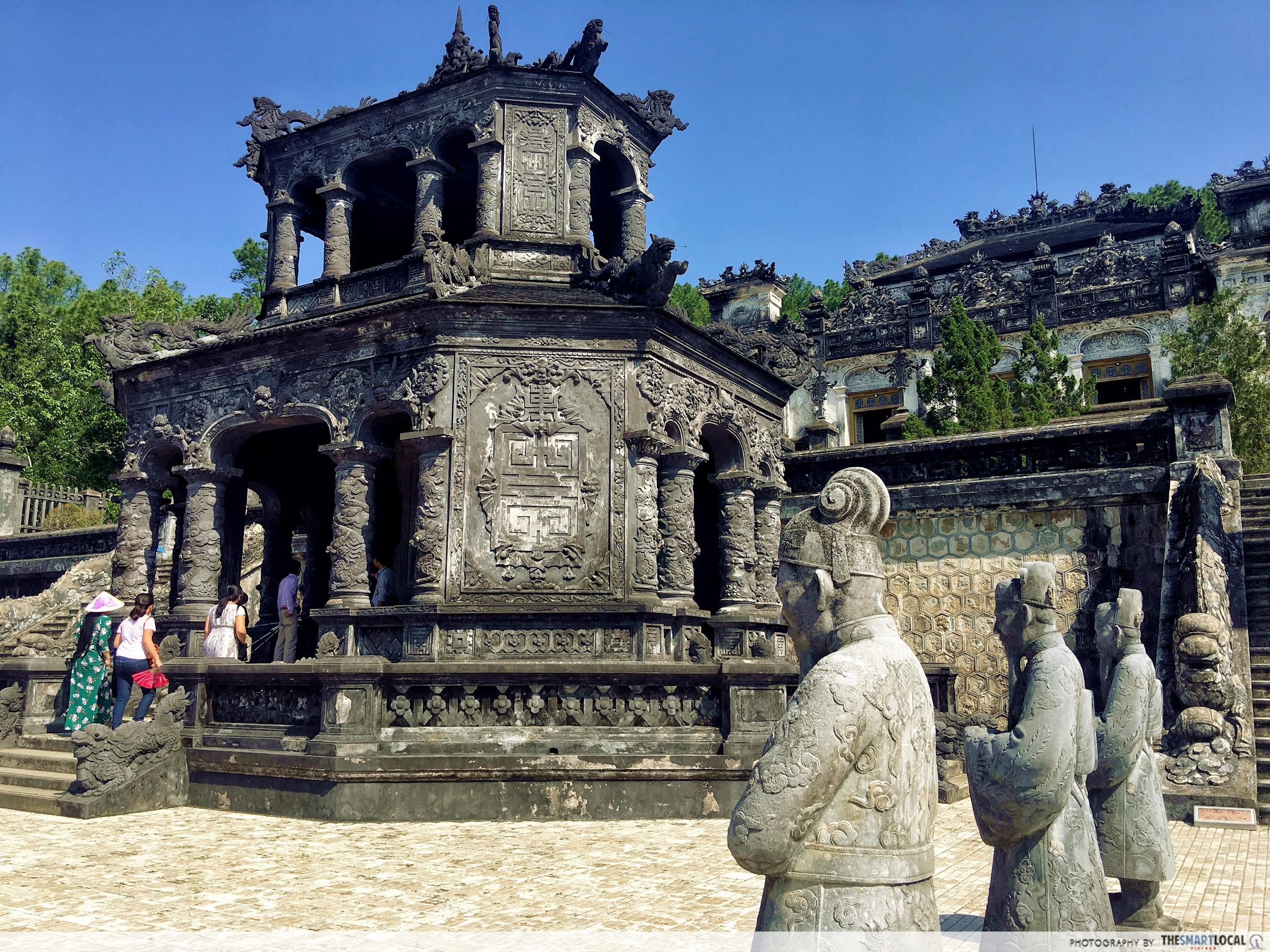 The front yard of the mausoleum
The front yard of the mausoleum
Among many heritage spots in the imperial city, this one is a must-visit.
First-time visitors are often in awe when they first step into the mausoleum grounds of Emperor Khải Định (who reigned from 1916-1925), because the whole space looks nothing like Vietnamese architecture, from the overall color to interior decor.
Emperor Khải Định broke tradition by requesting his mausoleum to be built in a more Westernized style, infused with elements inspired by Hindu, Gothic, Roman, and Buddhist design.

Image credit: @manuelamastro
On the outside, the mausoleum exudes an old-school royal vibe, with two lines of stone mandarins standing at the courtyard. Stepping inside, visitors will feel as if they have travelled to Versailles.
The mausoleum is 11 km away from the center of Huế to the south. For those who ride motorbikes or drive by themselves, get to National Route 49, and ride for about 20 minutes until you see the mausoleum. You can also take bus no. 5 to Đông Ba – Chợ Tuần.
Admission fee: VND100,000 (~USD4.39) per ticket
Address: Khải Định, Thủy Bằng, Hương Thủy, Huế
Opening hours: 7AM-5PM, Daily
Find out how to get there here.
4. An Định Palace – French architecture designed by Emperor Khải Định
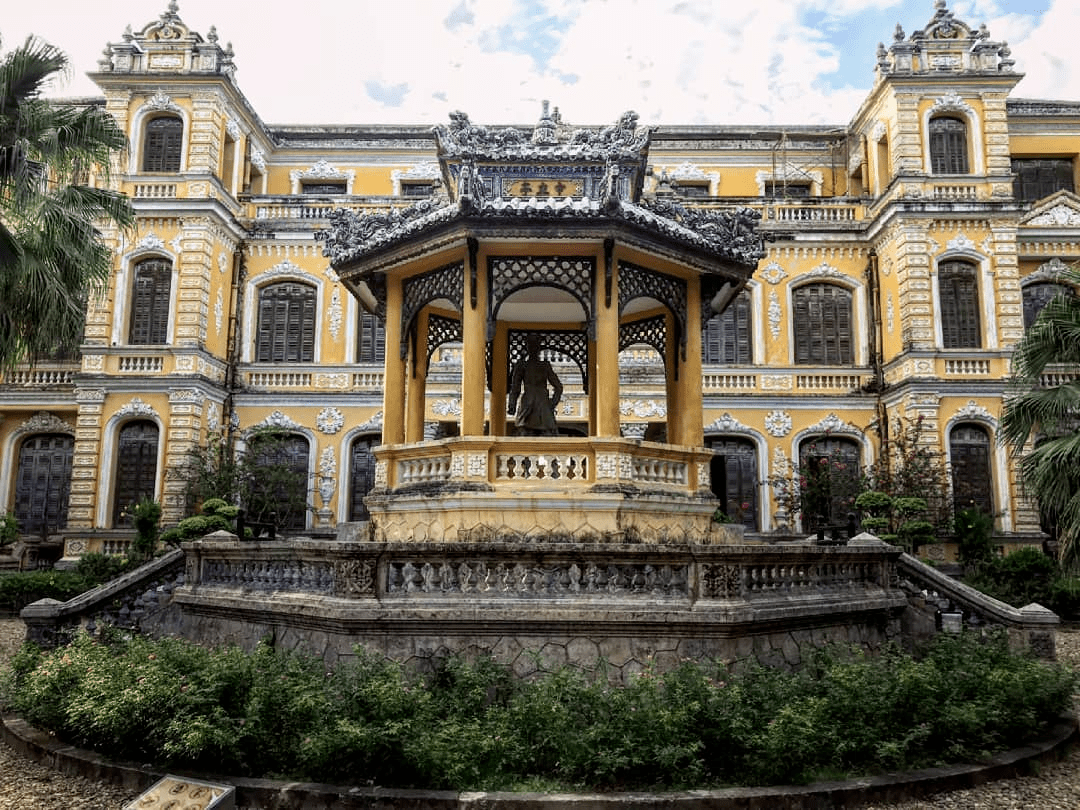
Image credit: @vcslr
Despite being a former imperial property, An Định Palace is not a part of the Forbidden City or somewhere near the Hương River as most first-time visitors suppose. It is situated on the bank of An Cựu River, a 5-minute ride away from An Cựu Market and Big C Mall.
Designed by Emperor Khải Định, who was heavily influenced by French aesthetics, the palace has 3 floors and its interior designs burst with opulence. The thick stone walls, tiled floors, and wall decorations are reminiscent of Europe’s grand chateaus.
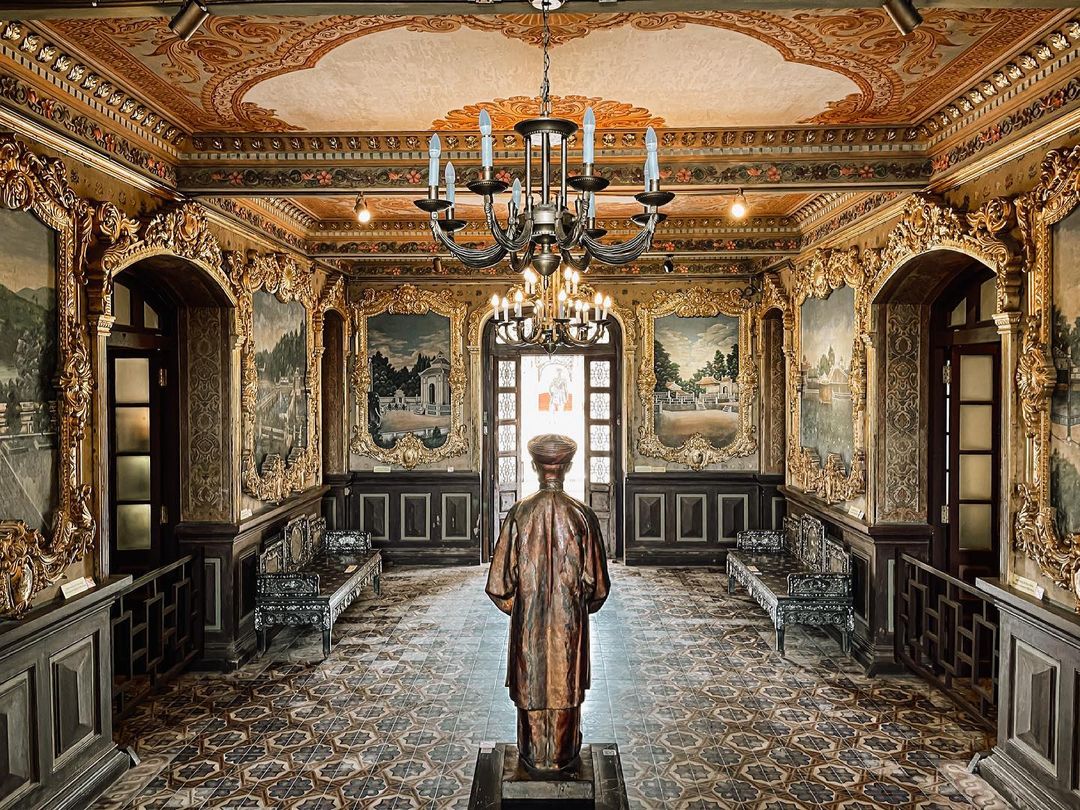
Image credit: @insleegram
Inside the palace, there is a full-length portrait statue of Emperor Khải Định that was made in 1920.
After Emperor Bảo Đại’s abdication in 1945, the royal family had been requested to move out of the Forbidden City, so they resided in An Định Palace for a few years. From then on, the place remained vacant until the Vietnam War was over, and then was repurposed into a tourist attraction.
Admission fee: VND20,000 (~USD0.88) per ticket
Address: 179 Phan Đình Phùng, Phú Nhuận, Huế
Opening hours: 7AM-5PM, Daily
Telephone: 0234 3524 429
Find out how to get there here.
5. Esplanade of Sacrifice to the Heaven and Earth (Đàn Nam Giao) – the most sacred worshipping platform during imperial times
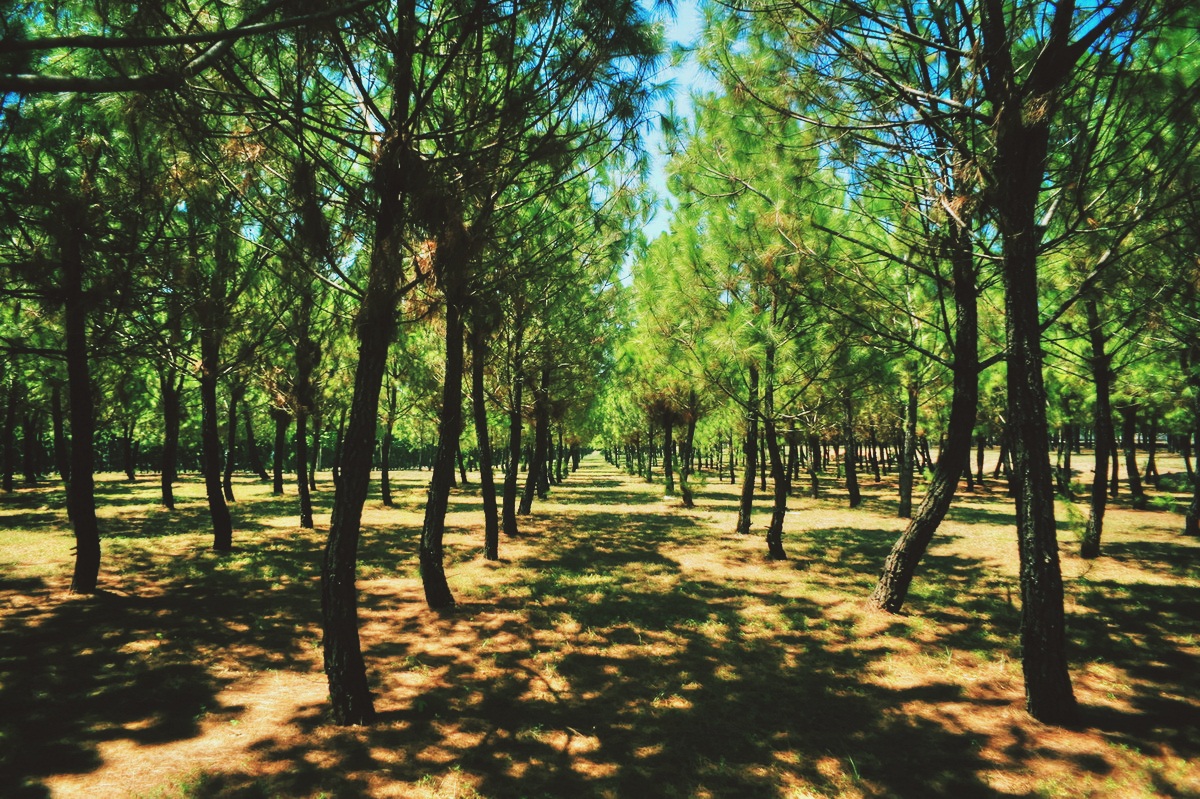
Image credit: Du Lịch Huế
Built in 1806, the Esplanade of Sacrifice to Heaven and Earth is an imperial altar dedicated to Heaven and Earth, and located 4 km away from the Forbidden City. It was used by Emperors of the Nguyễn dynasty to host significant ceremonies during which they offered prayers to Heaven.
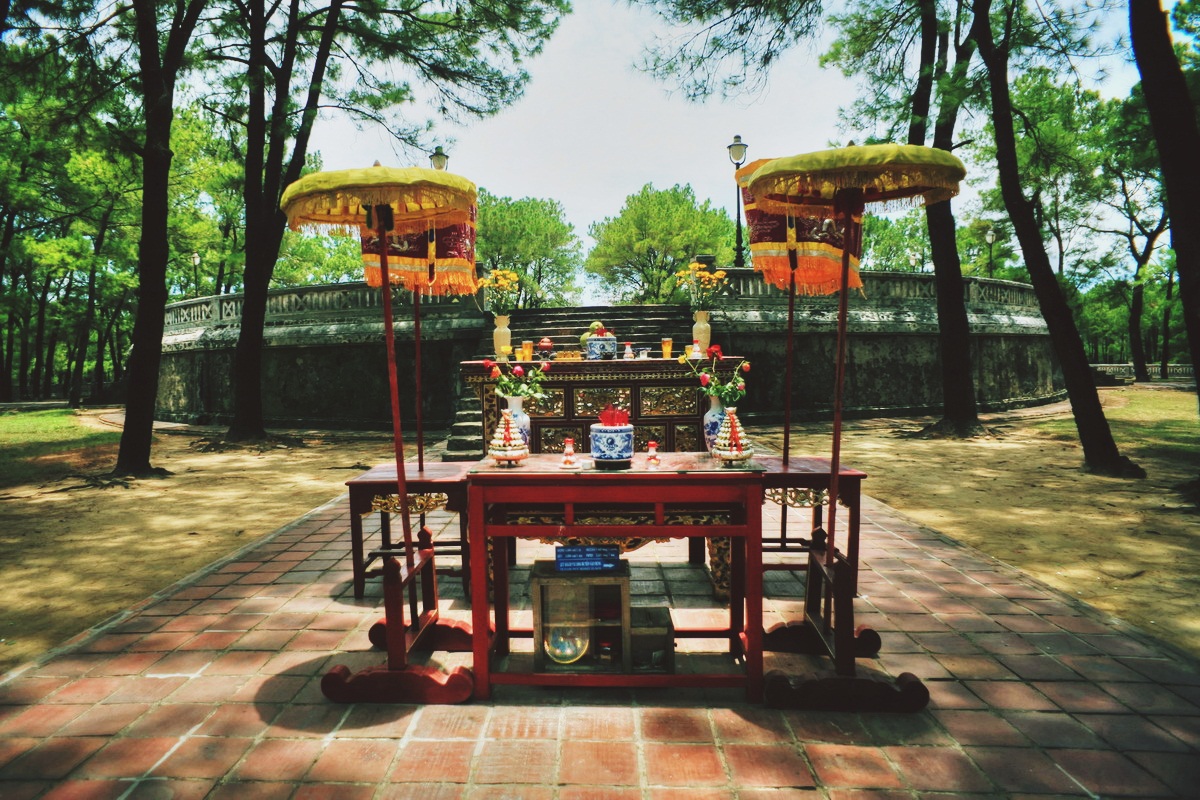
Image credit: Du Lịch Huế
The final worship offering hosted at the Esplanade was held on the 23th of March in 1945, by Emperor Bao Dai, 5 months before the Nguyen monarchy collapsed.
Admission: Free
Address: Trường An, Huế
Opening hours: 7.30AM-12PM I 1PM-5PM, Daily
Find out how to get there here.
6. Huế Citadel – the city’s most popular single-site tourist attraction
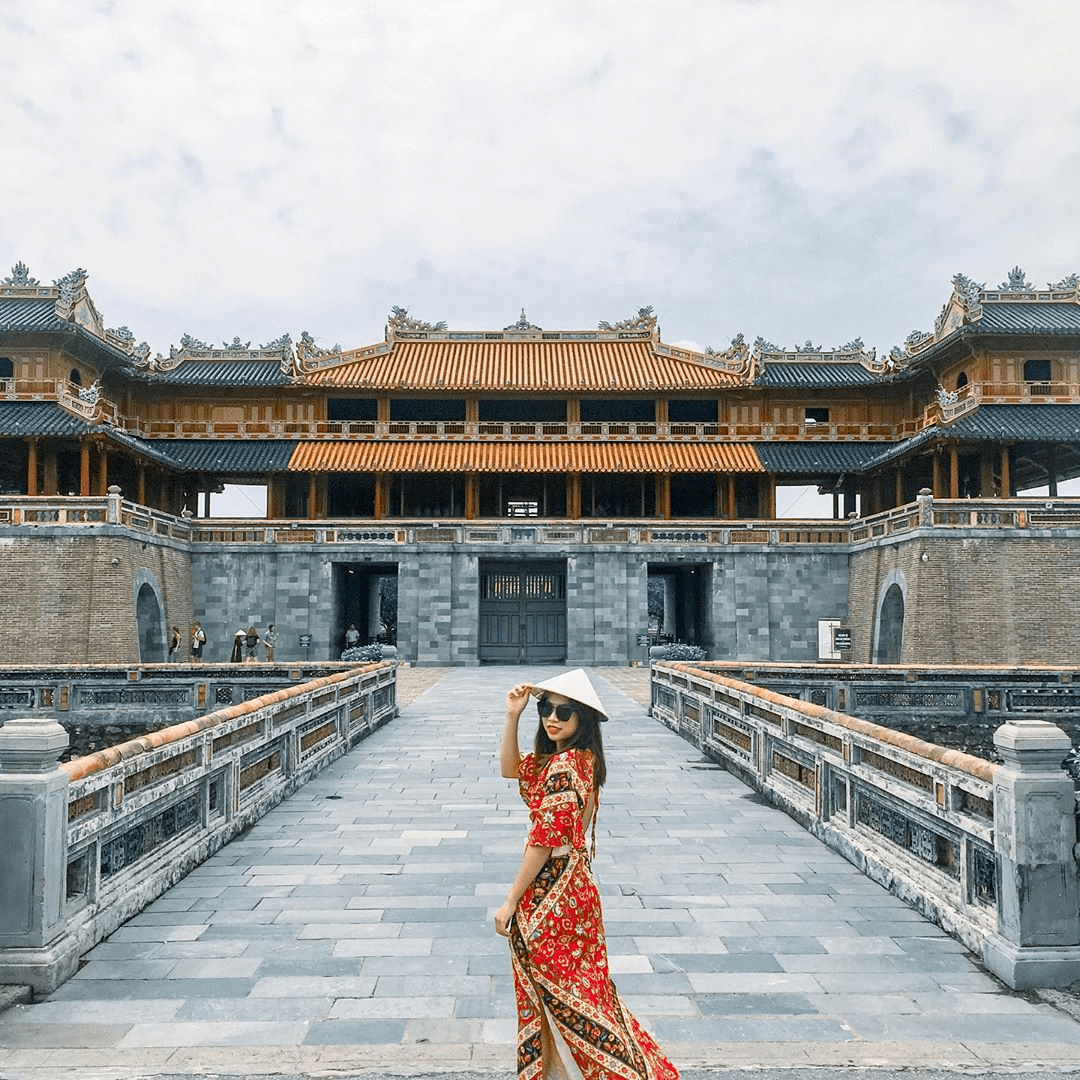
Image credit: @trangbui4676
There’s no better place to discover and reconnect with your Vietnamese roots than the Huế Citadel – home to traditional Nguyễn Dynasty architecture and a treasure trove of centuries-old artifacts.
Located right in the heart of Huế City and on the bank of the Hương River, it is not difficult to spot the palace the moment you cross Tràng Tiền bridge.
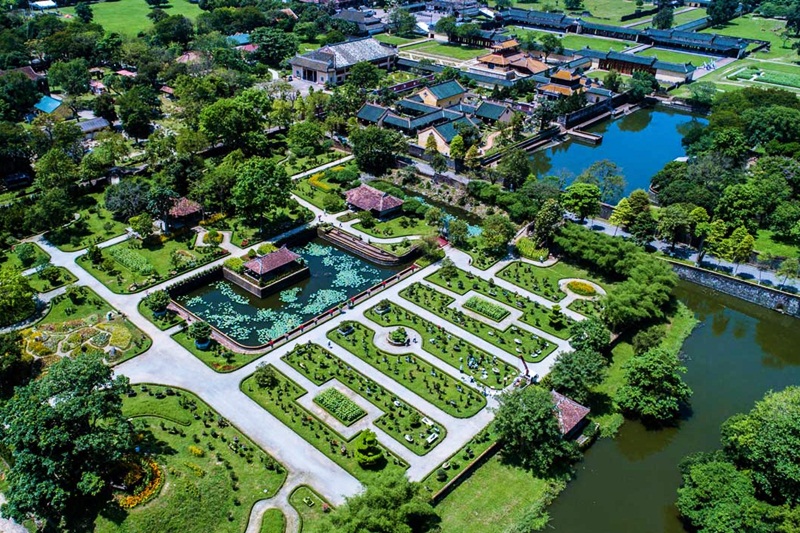
The gardens inside the Forbidden City
Image credit: Du Lịch Huế
Walking along about 2 km of fortified ramparts ringed by a moat routed from the Hương River, visitors will access the Huế Citadel, within which is the Forbidden City, once the main residence of the royal family.
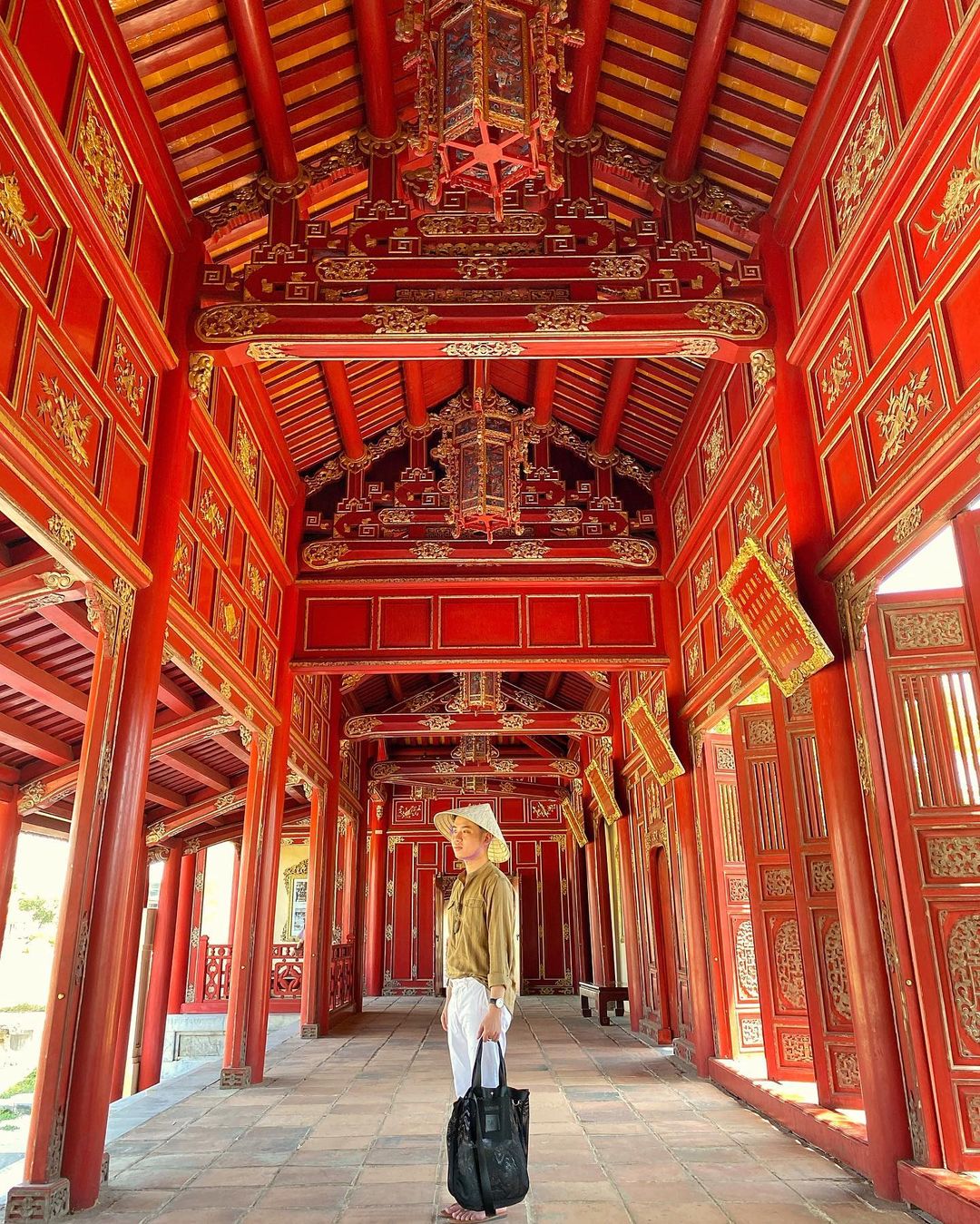
A corridor inside the palace
Image credit: @thanhduy_
Not to denigrate the experience, but 99% of the Forbidden City was destroyed in the wars, especially in the attack on Huế in 1968, so you’ll see many vestiges of ruined palaces along the way.
However, you can still stroll peacefully through some of the quiet and secret corners and courtyards that survived or have been renovated, while imagining what life in the palace was like.
 Gate to the palatial theatre
Gate to the palatial theatre
The Forbidden City has 4 doors, 4 grand outer courts, 14 inner courts, 6 temples, 2 pavilions, and many flower gardens.
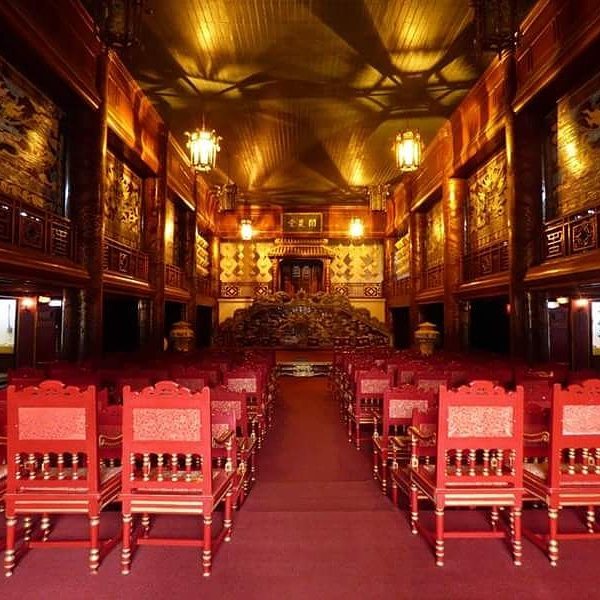
Duyệt Thị Đường, a palatial theatre built under the reign of Emperor Minh Mạng in 1826
Image credit: @kellyqua
To make the most of your visit here, you should visit Điện Thái Hòa, the grandest court where where the most significant ceremonies were hosted, Cung Diên Thọ and Cung Trường Sanh – the Queen Mother’s palaces, and Duyệt Thị Đường – the palatial theatre.
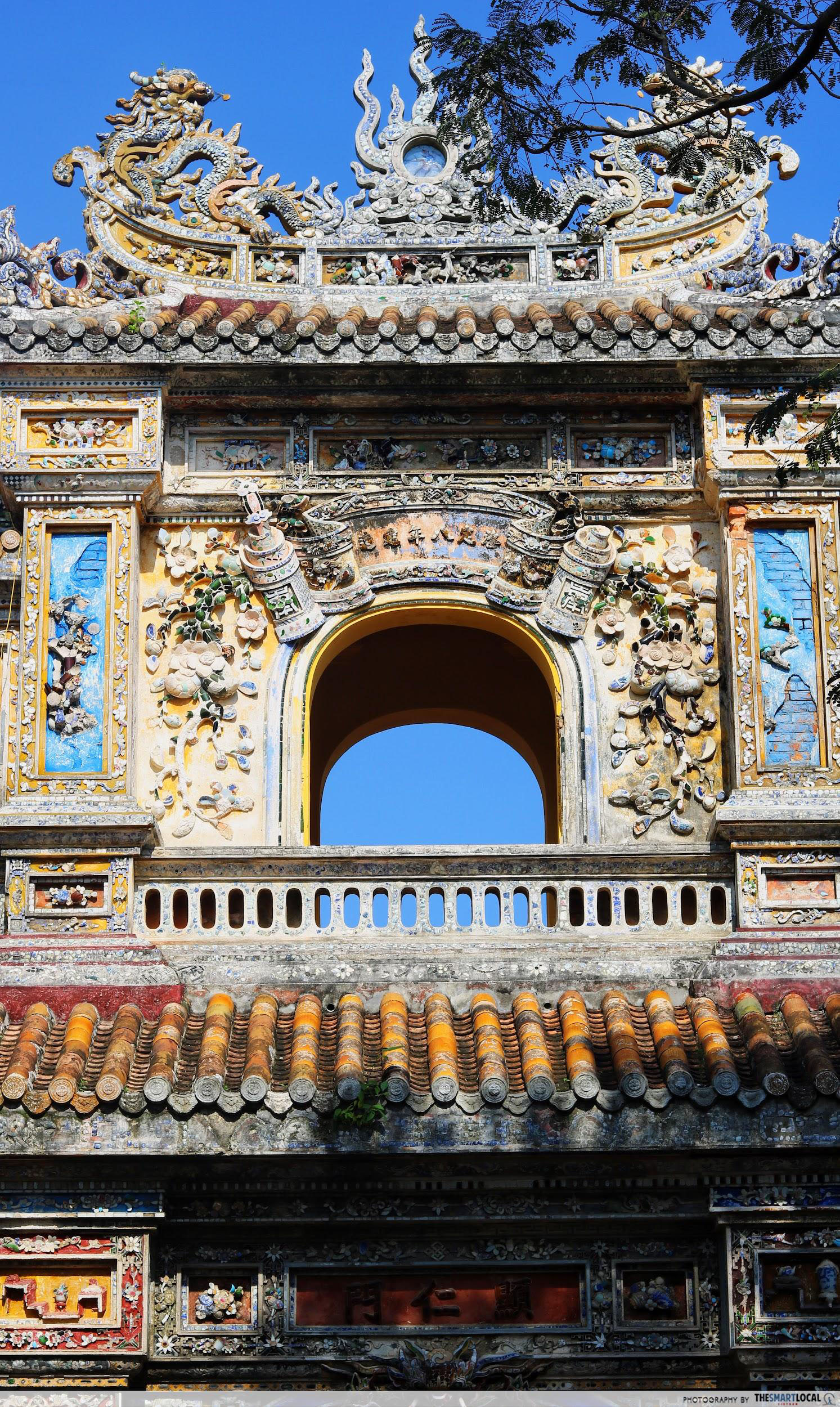 Cửa Hiển Nhơn – the Gate of Benevolence, one of the gates in the Forbidden City
Cửa Hiển Nhơn – the Gate of Benevolence, one of the gates in the Forbidden City
Admission fee: VND200,000 (~USD8.79) per ticket
Address: Phú Hậu, Huế
Opening hours: 8AM-5PM, Daily
Find out how to get there here.
– Beaches near Huế –
1. Thuận An Beach – 15-minute cab ride from the city center

Image credit: @hkzung
If you want to take a break from imperial properties and historic trails, you can travel 15 km from the center of Huế to Thuận An Beach – only a 15-20 minute cab ride.
It’s a clean beach with golden sand and blue water, quiet and not touristy at all. Expect a long stretch of natural beach with some restaurants dotted along the way.
When at Thuận An Beach, you can visit the Madame Thái Dương Temple, dedicated to the mythical wife of the God of the Sea, and the Trấn Hải Đài coastal defense platform, built under the rule of Emperor Gia Long in 1813.
How to get there:
You can take a bus from the city centre of Huế to Thuận An beach. Bus fare costs only VND6,000 (~USD0.26) per person.
2. Lăng Cô Beach – serene, and photo-ops aplenty
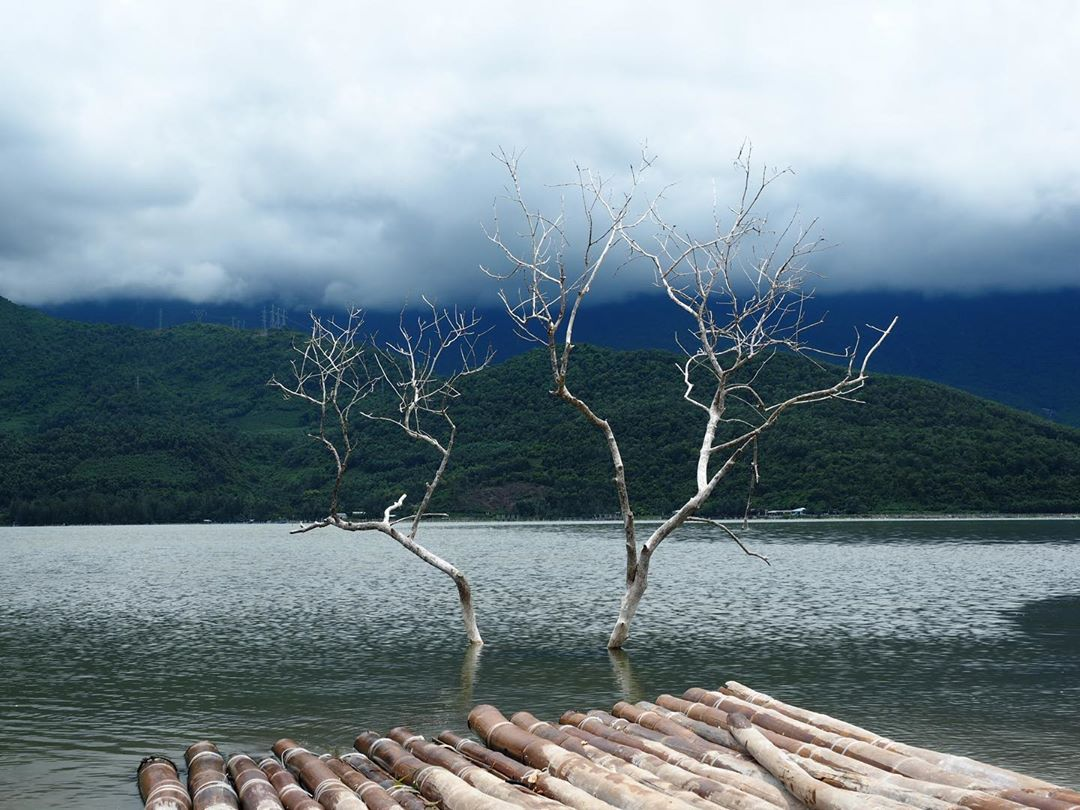
Image credit: @totoire_super
Lăng Cô Beach is a charming sandy beach, halfway between Huế and Hoi An, and just a few kilometers north of Da Nang.
However, be aware that Lăng Cô Beach is 70 km away from the city center of Huế, which is about a 1-hour and 50-minute drive, so if you’re determined to go there, try to stay for a few days to make it worth the travel.
There’re plenty of IG-worthy spots nearby – you can take plenty of bedazzling photos on the beach or go fishing.
You can go to the picturesque and tranquil Lập An swamp nearby to collect shells, or visit the pristine Chân Mây beach which is only 3 km away, boasting stark white sand that beautifully contrasts with azure waters.
And of course, eat seafood at the many street seafood stalls lining the beach and nearby streets.
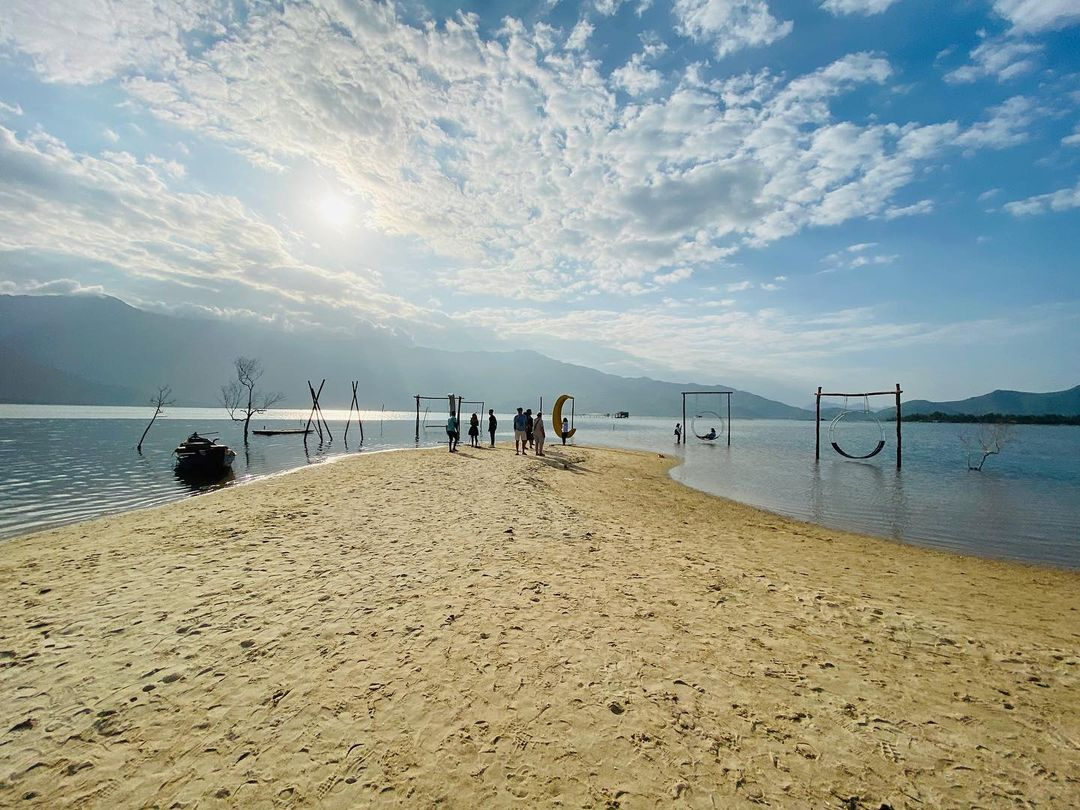
Image credit: @sammi5wu
How to get there:
Board a bus from the central bus station in Huế to Lăng Cô at VND50,000-VND60,000 (~USD2.20-USD2.64) per person.
Or board train no. SE 21 from Hue train station, departing at 6.47AM and reaching Lăng Cô at 8.09AM. On your way back, board train no. SE 22 from Lăng Cô train station at 8.28 AM, reaching Hue at 10.10 AM. Train tickets cost from VND60,000-VND90,000 (~USD2.64-USD3.96) per person.
You can find out how to book train tickets from Huế to Lăng Cô here.
3. Bạch Mã National Park – over 2,000 types of plants & 1,000 animals
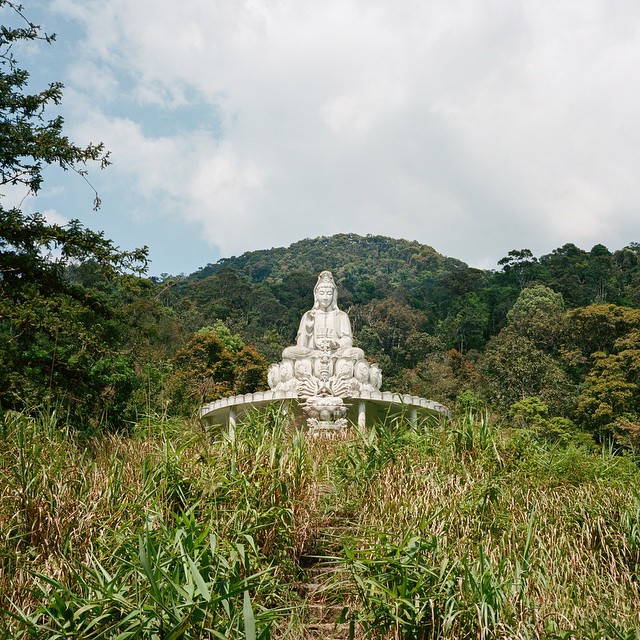
Image credit: @don_trim
If you spend a few days in Lăng Cô, you should spend about a day at Bạch Mã National Park, which is only 30 km away. Embark on its 5 fascinating lake trails, Đỗ Quyên Waterfall and venture into its semi-tropical rainforest with over 2,000 types of plants here and over 1,000 animals.
After arriving at Bạch Mã National Park, buy an entrance ticket, at VND40,000 (~USD1.76) per person. The route from the entrance to the peak of Bạch Mã is 19 km in length, so if you think you can handle the walk, follow the guiding signs along the way. If you can’t, you can rent a wagon at about VND900,000 (~USD39.57) per round ticket per person, which can be on the steep side.
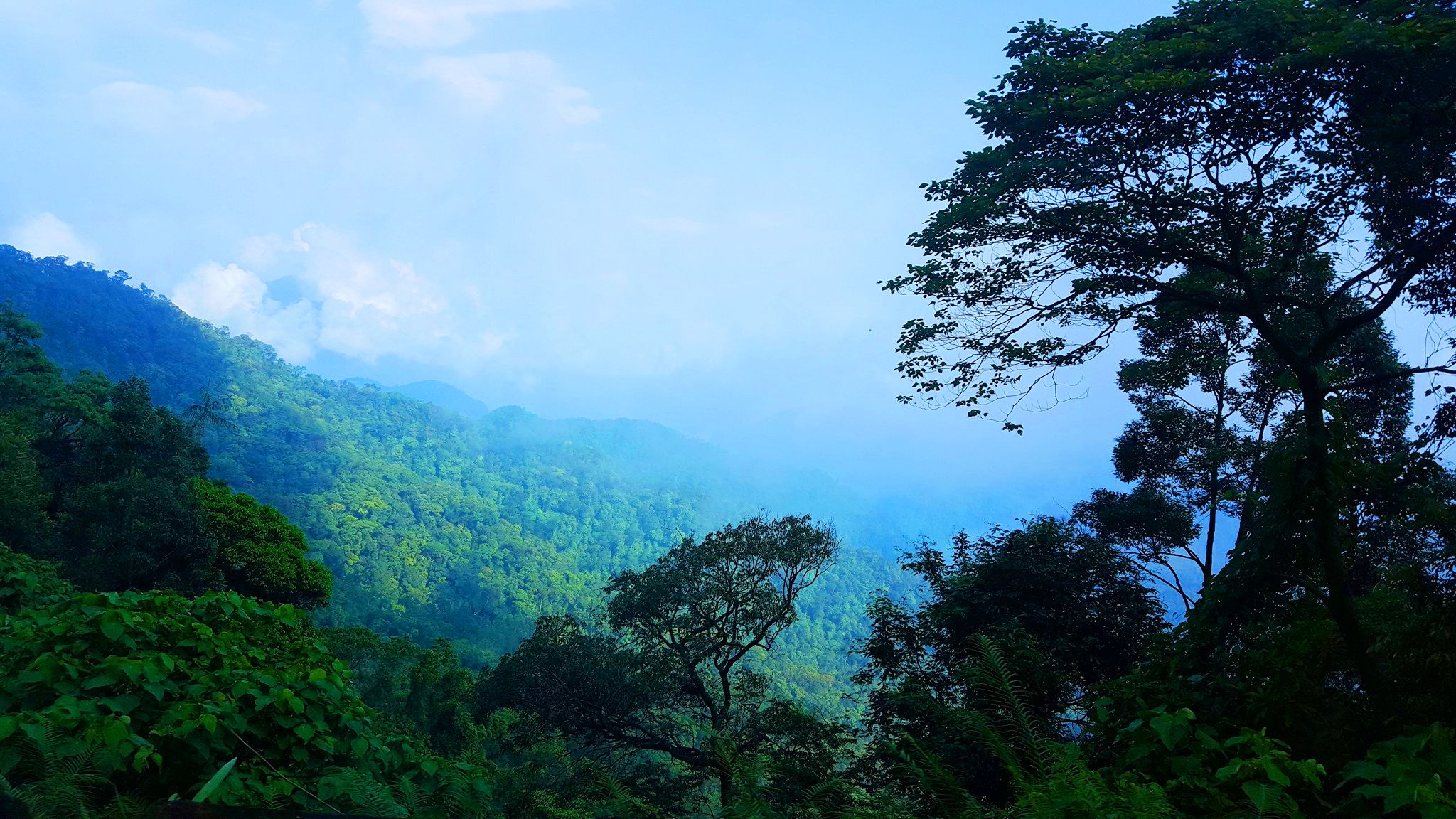
Image credit: Đinh Khắc Cảnh
You can skip the waypoints along the way, but you must reach Hải Vọng Đài – The Ocean Observing Platform, the peak of Bạch Mã, where you can have a panoramic view over mountain ranges, the forests, and the sea.
This place is not touristy and less developed, so think of it as a campsite where you can rough it out. If you plan to camp here, bring your own camping tools and enjoy plenty of fresh air in perfect serenity.
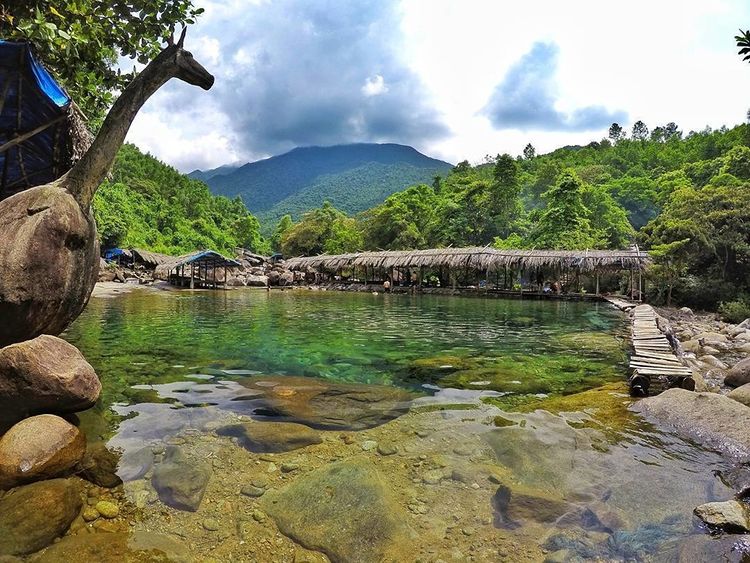
Image credit: @suoivoi.vietnam
It might take at least 4 hours to explore the place.
How to get there:
If you depart from the city centre of Huế, which is over 40 km away from Bach Ma forest, buy a bus ticket at Đông Ba bus station at No. 6 Trần Hưng Đạo Street.
However, if you’re new to the city, you can also ask the receptionist which commuting service provider you can use to travel to Bach Ma. For example, there are many car rental services in the city that’ll take you there from VND300,000-VND500,000 (~USD12.94-USD21.57) per person.
Admission entry: VND40,000 (~USD1.73) per ticket
Opening hours: 7AM-5PM, Daily
Telephone: 0234 387 1330
4. Elephant Springs (Suối Voi) – exhilarating dips and airy bungalows await

Image credit: @suoivoi.vietnam
Elephant Springs is about 53 kilometres from Huế, and is an excellent spot to escape the heat of Central Vietnam, because the springs are deep inside a forest so you’ll be surrounded by plenty of trees which cool the air.
The place is quiet enough for you to hear the sounds of waterfalls, springs, and birds chipping. You can bring your swimwear and take a refreshing dip in the clean waters here. Rent a bungalow at VND300,000-VND500,000 (~USD13.18-USD21.97) where you can place your belongings and rest too.
Try the food sold at the stalls here for your convenience but if possible, do get takeout from an eatery inside the city before you come here.
How to get there:
For your safety, you can rent a cab to go there, with cab fare ranging between VND450,000-VND700,000 (~USD19.78-USD30.77) for one ride. It takes about 1 hour to commute from the city centre of Huế to the Elephant Springs.
For motorcyclists, you can rent a motorbike at Hidibike at about VND100,000-VND300,000 (~USD4.40-USD13.19) per bike, and ride 50km to the south of Huế towards the direction of Phước Tượng Pass. 3KM past Phước Tượng Pass, you’ll reach KM879. Turn right there and ride another 7 km before you reach the Elephant Springs.
Admission fee: from VND50,000 (~USD2.20) per ticket
Address: Lộc Tiến, Phú Lộc, Huế
Opening hours: 8AM-5PM, Daily
Things to do in Huế, Vietnam’s imperial city
Traveling to Huế is like walking through a textbook. When most people think of Vietnam, the wars generally cross their mind first, not the country’s thousands of years of history that you can still explore in places like this.
Though severely damaged in many wars, Huế is a treasure trove of knowledge about Vietnam as a whole, and still serves as a visual museum of Vietnamese culture, education system, and culinary arts in its earlier years.
Also check out:
- Guide to Dalat: Vietnam’s most popular holiday town
- 20 natural attractions across Vietnam for a thrilling getaway
- Basilica of Our Lady of La Vang: where the Virgin Mary appeared
- Guide to Saigon’s Japan Town: from omakase dining to onsen bath
- 8 furniture stores in Saigon for comfortable bedding & multifunctional desks
- Check out Southeast Asia’s largest MUJI store in District 1
Cover image adapted from: Đầu Bếp
Enjoying The Smart Local Vietnam? Follow us on Facebook, Instagram, and LinkedIn for more stories like this.
